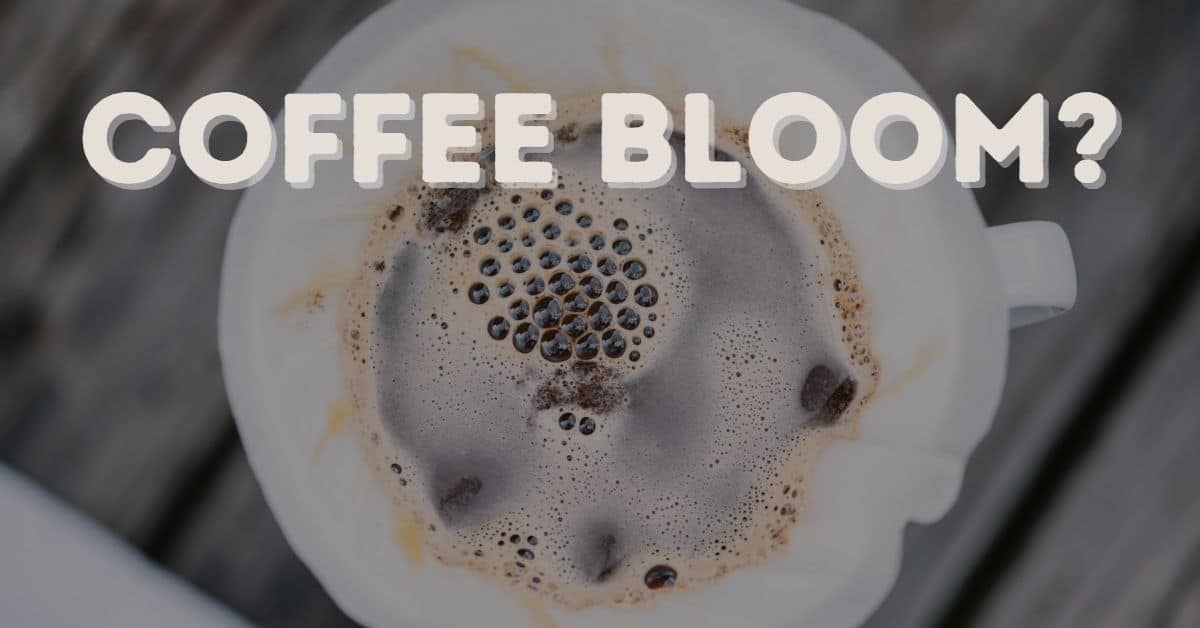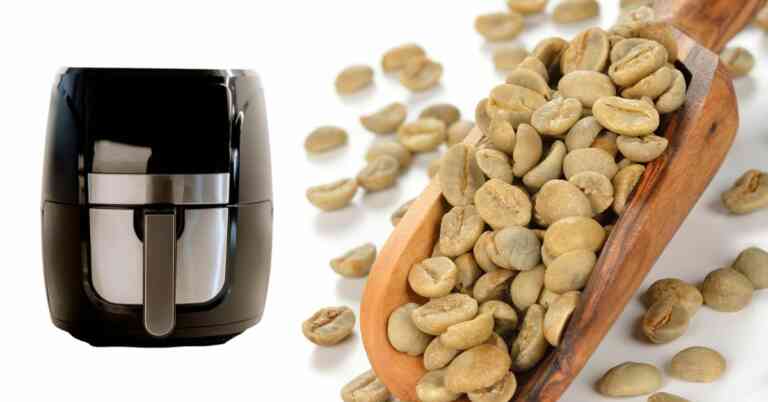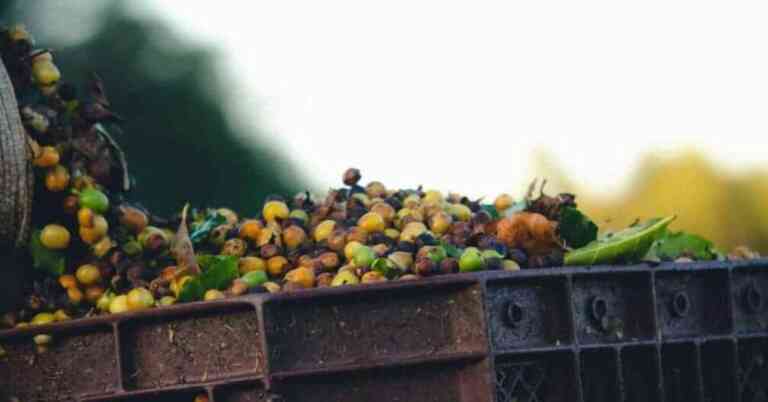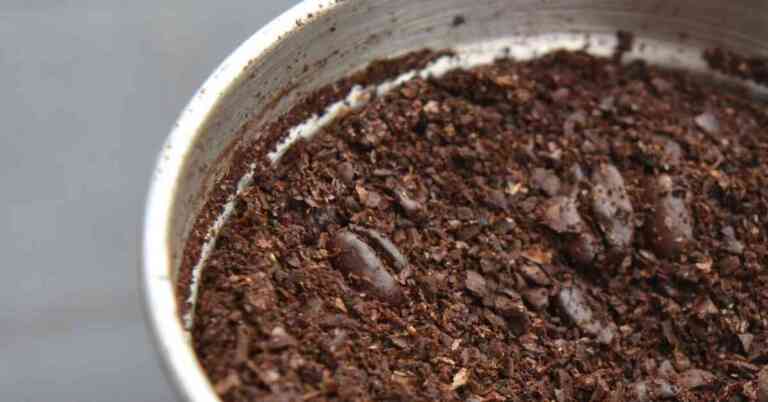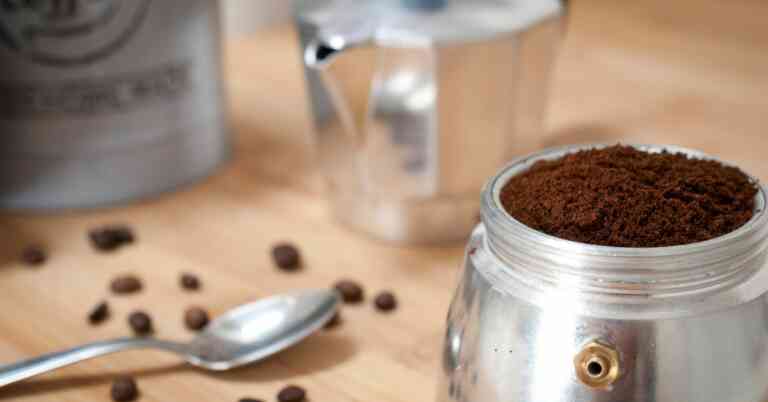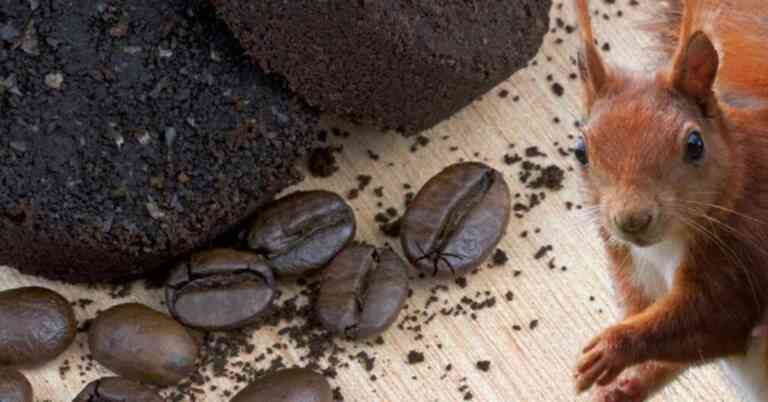Uncovering the Mystery of Coffee Bloom: Everything You Need to Know!
Millions of people around the world are coffee drinkers. Whether you prefer a simple cup of black coffee or a fancy latte, there is no denying the importance of coffee in our daily lives.
One aspect of coffee brewing that is often overlooked but is crucial to a great cup of coffee is coffee bloom.
This article will delve into the science behind coffee bloom, how to identify it, and the significance of it in brewing.
Additionally, we will discuss best practices for achieving a good bloom, common mistakes to avoid, and troubleshooting tips for poor bloom.
What Is Coffee Bloom?
Coffee bloom refers to the rapid release of gas from freshly roasted and ground coffee when hot water is poured over it.
The release of carbon dioxide causes the coffee to foam and bubble, creating a “bloom” on the surface of the coffee.
The bloom typically lasts for about 30 seconds after the water is added, and then it settles down as the drink continues to brew.
This is a natural process and is an important part of brewing. It can greatly affect the quality and taste of the drink.
Why Do We Need to Understand Coffee Bloom?
Understanding this aspect of making coffee is essential for achieving a great drink. When you bloom coffee properly, it results in a more even extraction, improved flavor, and better overall quality.
Neglecting to bloom coffee can result in under-extraction, uneven flavor, and a stale taste. Therefore, understanding coffee blooming is important for both professionals and homebrewers alike.
The Science Behind Bloom
The science behind coffee blooming is rooted in chemistry. When coffee beans are roasted, they undergo a process called pyrolysis. This causes the beans to release gases like carbon dioxide.
These gases are trapped inside the coffee bean and are released when hot water is added during the brewing process.
The release of carbon dioxide causes the grounds to expand and creates the foam and bubbles we see during the coffee blooming process.
What Contributes to The Bloom?
Several factors contribute to the quality and intensity of the bloom.
One of the most important factors is freshness. Freshly roasted beans will produce a more intense bloom than older beans.
Other factors that affect blooming include:
- The grind size: Coarsely ground coffee results in a more pronounced bloom. A finer grind size can result in a weaker bloom.
- The water temperature: Higher water temperatures make the bloom more pronounced while lower temperatures have the opposite effect.
- The brewing method: some brewing methods produce a more consistent bloom than others.
What Does the Bloom Look Like?
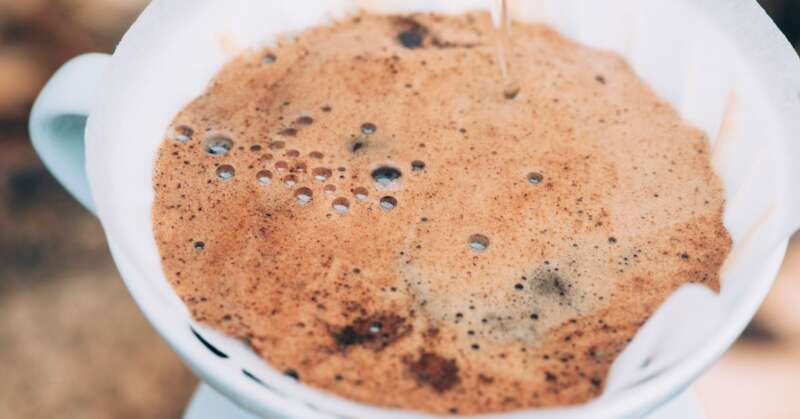
The first step to understanding the bloom is knowing what to look for.
Visual Appearance:
When hot water is added to freshly roasted and ground coffee, you will notice bubbles and foam forming on the surface. This is the bloom.
The bloom will last for about 30 seconds and then settle down as the coffee continues to brew. A strong and vigorous bloom is a good indicator of freshly roasted and properly stored coffee.
Smell:
You will also be able to identify bloom by its smell.
As carbon dioxide is released from the coffee, it carries with it volatile organic compounds. It is these compounds that contribute to the aroma of the brew.
When you smell freshly brewed coffee, you may notice a distinct aroma. The aroma will smell different compared to coffee that has not undergone bloom.
Taste:
Properly bloomed fresh roasted coffee will have a more even extraction and improved flavor compared to coffee that has not undergone bloom.
The flavors and notes of the drink may be more pronounced, and the overall taste will be smoother and more balanced.
On the other hand, coffee that has not undergone bloom may have a stale, flat sour taste. It also risks being under-extracted coffee.
To summarize, identifying bloom is important for understanding the quality of your coffee.
By observing the visual appearance, aroma, and taste of the coffee, you can determine whether or not it has undergone proper bloom and adjust your brewing methods accordingly.
The Significance of Bloom in Coffee Brewing
Bloom plays a significant role in the extraction of flavor compounds from the freshly ground coffee beans.
As carbon dioxide is released from the coffee during bloom (the degassing process), it creates channels within the coffee bed that allow water to penetrate more deeply and evenly.
This leads to a more even extraction of flavor compounds from the coffee, resulting in a better-tasting cup.
How Coffee Bloom Affects Flavor:
Coffee bloom affects the flavor of the coffee in several ways. The carbon dioxide released when blooming your coffee can contribute to its acidity and brightness.
Additionally, the more even extraction that results from proper bloom can lead to a more flavorful cup. The drink will have a balanced flavor profile with notes of sweetness, bitterness, and acidity in harmony.
The Impact of Bloom on Freshness:
The bloom is also an important indicator of the freshness of the coffee. As coffee beans age, they lose carbon dioxide and other volatile compounds that contribute to flavor and aroma.
Fresher beans will contain more trapped carbon dioxide and will produce a more vigorous bloom when you add hot water.
Therefore, observing the quality of the bloom can give you an idea of how fresh your beans are. Freshly roasted coffee will always produce a more flavorful cup.
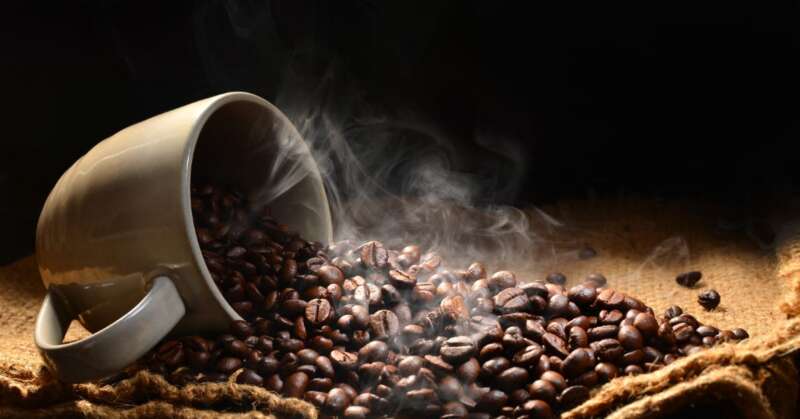
What Happens if We Don’t Let Coffee Blooming Happen?
The bloom is a crucial aspect of coffee brewing that affects the extraction, flavor, and freshness of the coffee.
If you don’t let coffee blooming happen, it can result in an uneven extraction and weaker flavor.
As mentioned, the blooming process lets carbon dioxide escape from the grounds. This release of gas causes the ground coffee to expand and become lighter.
The expansion creates a space between the grounds. When more hot water is added after the bloom, the space the bloom created allows for a more even saturation. Ultimately, this results in a more uniform extraction.
If you skip the blooming process in a pour over coffee, for example, the carbon dioxide gas will still be trapped within the grounds. This makes them more compact and leads to uneven saturation when the hot water is added.
With carbon dioxide trapped, its sour taste gets infused into the coffee. What’s more, carbon dioxide repels water, thus further interfering with the brewing process.
Therefore, to achieve a more even and flavorful extraction, it is important to allow coffee to bloom before brewing. Typically, blooming for 30 seconds to a minute is recommended before continuing with the rest of the brewing process.
How to Bloom Coffee (Best Practices)
To achieve a good bloom, there are several best practices that you should follow:
- Use freshly roasted and properly stored beans.
- Use a high-quality coffee grinder to grind the beans just before brewing.
- Use hot water that is between 195 and 205 degrees Fahrenheit.
- Use a method that allows for even saturation of the coffee grounds, such as pour-over or French press.
- Use a coffee-to-water ratio that is appropriate for your extraction method.
- Pour the water slowly and evenly over the coffee grounds to ensure even extraction.
Common Mistakes to Avoid when Brewing Coffee:
There are several common errors that can prevent a good bloom. These include:
- Using stale or improperly stored beans.
- Using a blade grinder instead of a burr grinder (this affects the consistency of the grind).
- Brewing with water that is too hot or too cold.
- Using too much or too little coffee for your chosen method.
- Pouring the water too quickly or unevenly over the coffee grounds.
Troubleshooting Tips for Poor Bloom:
If you are experiencing poor bloom, there are several things that you can try to help you work out why this is:
- Check the freshness of your coffee beans and make sure they have been stored properly. Fresh coffee will always bloom better.
- Adjust your water temperature to fall within the optimal range.
- Adjust your coffee-to-water ratio to ensure proper extraction.
- Use a finer or coarser grind size depending on the method used.
- Make sure to slowly pour the water evenly over the coffee grounds.
The Impact of The Different Brewing Methods, the Roasting Process and Grind Size on The Bloom
The way you make your coffee can have a significant impact on the bloom.
Some methods, such as pour-over, a drip coffee maker or a French press, allow for more even saturation of the coffee grounds during the brewing phase. This can result in a more consistent and prominent bloom.
On the other hand, methods that involve immersion, such as a coffee pot or espresso machine, may not allow for as much contact between the water and the coffee grounds. This can result in a weaker bloom.
The Roasting Process
During the roasting process, coffee beans undergo a series of chemical reactions that affect their physical properties. When heated, the organic material in the beans releases CO2.
The extent of the roasting process can determine how much gas is trapped inside the coffee beans, and therefore how much is released during the bloom.
Lighter roasts tend to have more trapped carbon dioxide, which means they will have a more pronounced bloom.
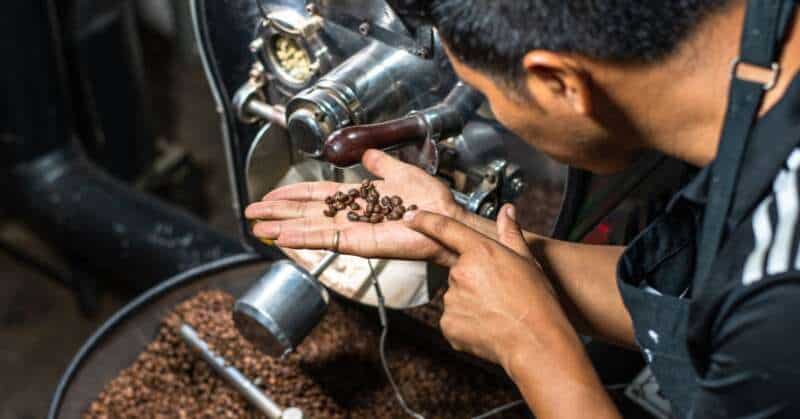
This also means, however, that lighter roasted coffee will require more attention during the degassing process. This is in order to prevent over-extraction due to the increased amount of gas being released.
The longer roasting process of darker roasts mean they tend to have less trapped carbon dioxide gas. This means they can have a less pronounced bloom. This can lead to a weaker flavor if the bloom is not adequately achieved.
It is worth noting that the quality of the coffee beans used in the roasting process can also affect the coffee bloom. Beans that are old or stale may not have enough trapped carbon dioxide gas to create a good bloom, while beans that are too fresh may have too much gas, leading to an overactive bloom.
Grind Size
When you bloom coffee, the size of the coffee grounds can produce different results, depending on the brewing method.
In a pour-over coffee, for example, using a medium-fine grind size can result in a more pronounced bloom. In contrast, you’ll notice a weaker bloom if you use a coarser grind size.
With an espresso machine, using a finer grind size can lead to a more prominent bloom. This is due to the high pressure and water flow rate.
What About Cold Brew Coffee?
Cold brew coffee is a unique method that requires a different approach to coffee bloom.
In cold brew, the grounds are steeped in cold water for an extended period, usually 12 to 24 hours, instead of being brewed with hot water.
Because of the low temperature, the coffee bloom in cold brew is less pronounced compared to hot water methods.
However, the bloom still plays an important role in the cold brew process. When the coffee grounds are first added to the cold water, they will release some carbon dioxide and create a small bloom.
Since the temperature is much lower than in hot water methods, the carbon dioxide release will be slower and less pronounced. This slow release allows the coffee grounds to more evenly saturate with water and extract the compounds over the extended brewing time.
Cold brew requires a longer steep time to extract the flavors from the coffee. A good bloom can still help to ensure a better extraction, even for cold brew.
For this reason, some cold brew recipes recommend allowing the coffee to bloom for a short period, usually around 30 seconds, before pouring the remaining water. You can then stir the mixture to ensure the grounds are uniformly soaked before steeping.
Final Thoughts
Bloom is a crucial aspect of coffee brewing that affects the extraction, flavor, and freshness of the coffee. It plays a significant role in the release of compounds from the coffee grounds and can significantly impact the taste of your coffee.
Understanding the science and significance of the bloom can help you achieve a better-tasting drink. This can also provide a deeper appreciation for the complexities and nuances of coffee brewing and enhance your overall coffee experience.
Experimenting with bloom is interesting and you’ll learn a lot simply by observing blooming coffee and trying out different extraction methods and variables.
By following best practices and avoiding common mistakes, you can achieve a perfect bloom and enjoy a truly exceptional cup every time.
So, take the time to appreciate and experiment with bloom in your own coffee brewing routine and discover the amazing flavors and aromas that it can bring to your cup.
By unlocking the mysteries of coffee bloom, you can unlock a world of incredible flavor and richness in your cup of coffee.

